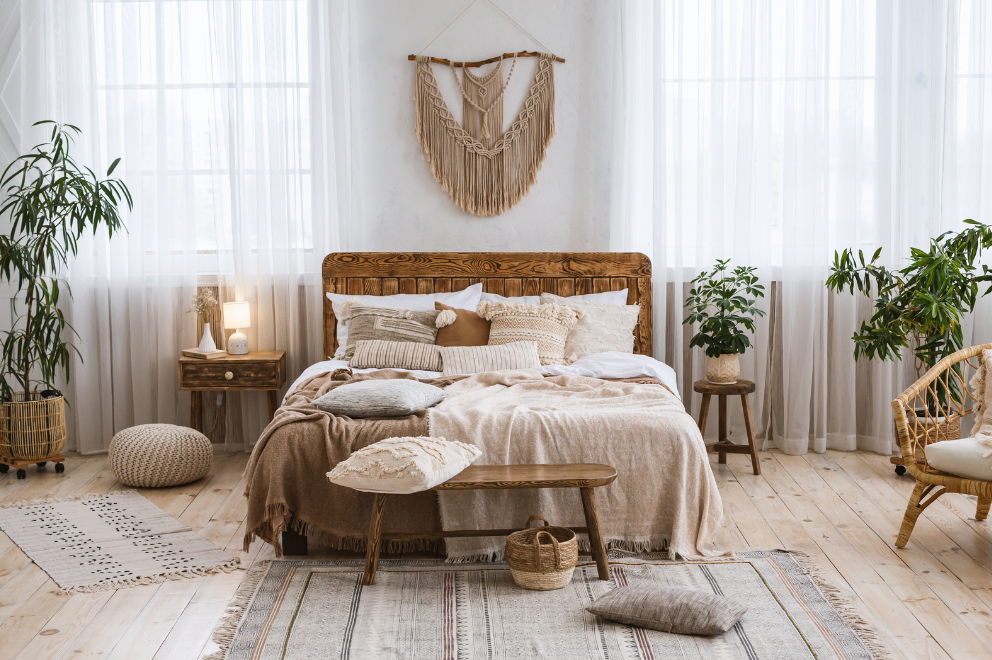Home decor can be a big expense for many of us. From a few pounds for a vase to thousands of pounds for a bespoke piece of furniture, it’s fair to ask why home decor can cost so much. In this post, you’ll find out the reasons behind these expensive costs and explore 8 key factors that contribute to the high price of home decor. By the end, you’ll know why investing in home decor means spending a bit more and why in many cases it’s worth it.
Why is Home Decor So Costly?

Home decor can be expensive for many reasons, including high end materials, expert craftsmanship, fair pay for artisans and limited production. Handmade home goods in particular are more expensive because of the quality and expertise that goes into making them.
To make your home look expensive on a budget focus on the outside, invest in furniture with character, add architectural texture, statement lighting and luxury materials. Pay attention to detail, boost storage and make sure your backyard is tidy can also make it look expensive.
8 Reasons Why Home Decor Can Be So Expensive
1. The Materials Used
The materials used in home decor items are a big factor in the price. Premium hardwoods like oak, walnut and cherry are durable, beautiful and often more expensive than engineered wood or particle board. Luxurious fabrics like leather, linen and wool are comfortable, stylish and durable but come with a higher price tag. High density foam, down feathers and natural fibres are comfortable and supportive but more expensive than cheaper alternatives. These materials are often sourced from specific regions or suppliers which adds to the cost.
2. Expert Craftsmanship
Many home decor items require intricate craftsmanship, precision, skill and time. Furniture made by skilled artisans involves lots of attention to detail and time consuming processes which means a higher price. Traditional joinery methods like dovetail and mortise-and-tenon joints make for stronger and more durable pieces. Hand carved furniture, hand blown glass or hand painted artwork are examples of pieces that cost more because of the labour involved.
3. Brand and Marketing
Established brands with a good reputation charge more for their products. This is because of the cost of marketing, advertising and maintaining a brand image. Luxury brands in particular invest heavily in these areas which is reflected in the price. Exclusive collections or limited edition pieces can cost more because of the demand.
4. The Products and Furniture Design
Original designs and new concepts cost more. Unique pieces designed by famous designers or architects are more expensive because of the exclusivity. Furniture designed for comfort and functionality may include advanced technology or materials which adds to the cost. The ability to customize furniture through custom dimensions, fabrics, or finishes adds to the overall cost. Designers invest time, money, and creativity to create unique styles and these pieces come in premium.
5. Limited Production
Handmade or limited edition pieces are more expensive because of the exclusivity. The scarcity of these pieces drives up the demand and therefore the price. Producing furniture in small quantities or one off pieces can add to the cost because of the labour intensive process and special materials. Furniture from established brands with a long history of craftsmanship and design command a premium.
6. Distribution and Retail
Having physical showrooms with rent, utilities and staff contributes to the overall cost of furniture. To cover operating expenses and profit margins retailers add a big markup to the price of furniture. While online shopping may be cheaper in some cases, factors like shipping, warehousing and returns can add to the cost.
Home decor costs can be broken down to many factors, materials, craftsmanship, brand reputation, design and more. Knowing these factors will help homeowners make informed decisions when buying home decor.
7. Research and Development
Developing new high performance materials that are sustainable and durable requires investment in research and development. Adding cutting edge technology like motion sensors, smart materials or advanced manufacturing processes adds to the cost.
8. Economy
Like most things, furniture prices are affected by inflation rates, the cost of materials, labour and transportation. For imported furniture, fluctuations in exchange rates can impact the price to the consumer. During economic downturns, production costs can increase due to material prices or labour shortages.
Frequently Asked Questions
How can I get trends in my home decor on a budget?
Look for budget friendly alternatives to trend pieces, DIY or second hand. You can also incorporate small accents like throw pillows, artwork or plants to capture the trend without breaking the bank.
How can I make my home decor look expensive without spending big?
Focus on quality not quantity, invest in statement pieces and pay attention to details. Adding natural elements, using mirrors to create the illusion of space and decluttering can also make your decor look more valuable.
How can I get trends in my home decor on a budget?
Look for budget friendly alternatives to trend pieces, DIY or second hand. You can also incorporate small accents like throw pillows, artwork or plants to capture the trend without breaking the bank.
How do I know if a high end decor piece is worth the investment?
Consider the quality of materials, the craftsmanship and how it will enhance your space. If these align with your style and budget then it might be worth it.
Conclusion
Home decor can be expensive but there are ways to look expensive without breaking the bank. By prioritising your spend, mixing high end and budget pieces and focusing on details you can create a beautiful space. Hiring an interior designer can also be cost effective in the long run as they can help you budget, prevent costly mistakes and add value to your home.
